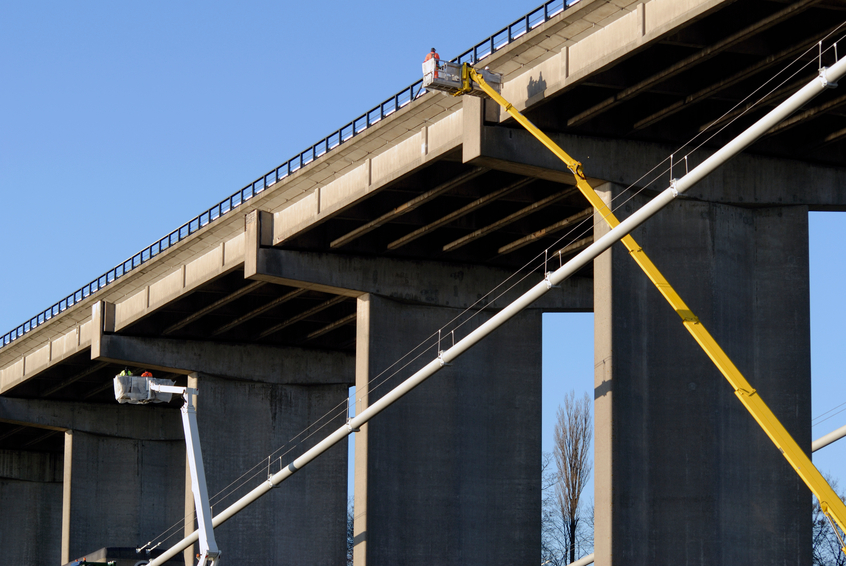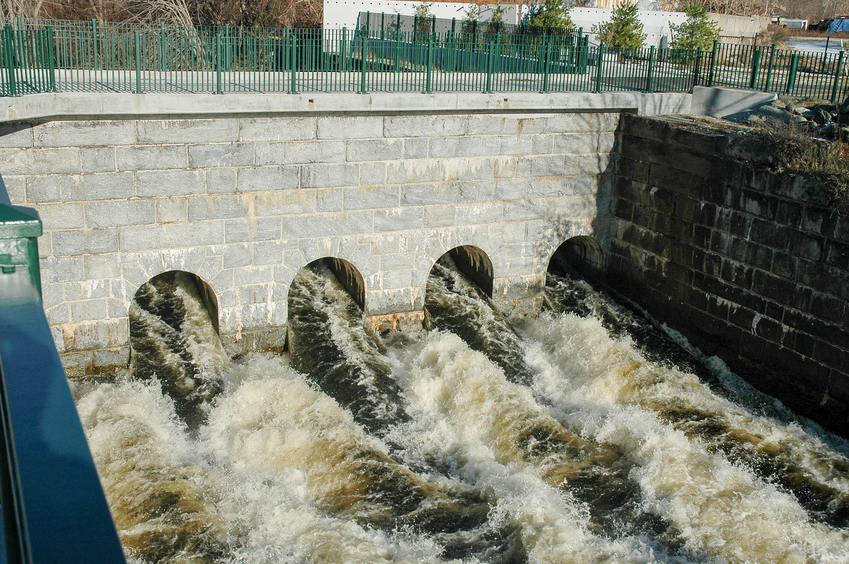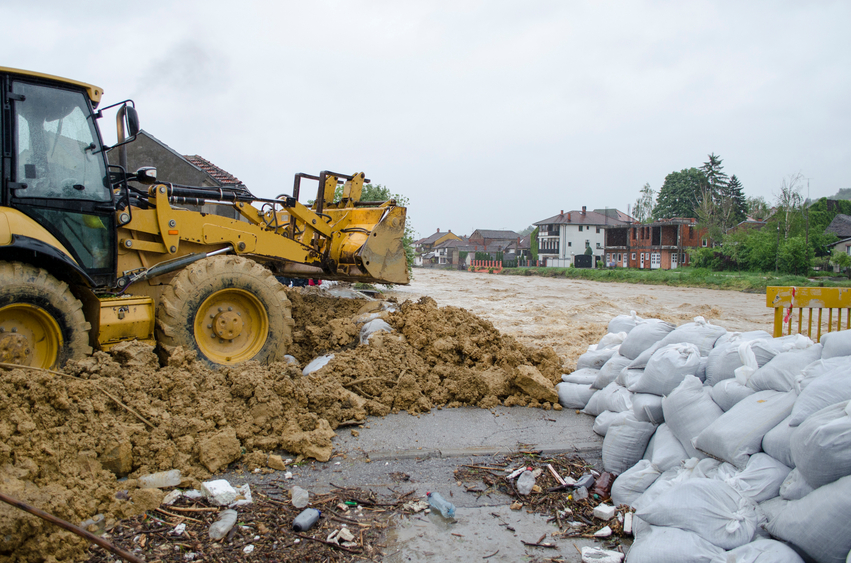Saskatchewan Structural 30 PDH Discount Package 2
Courses in this Package
Underwater Inspection of Bridge Substructures Using Imaging (S12-001)
Conduits, Culverts and Pipes - Design and Installation (S04-001)
Reducing Flood Risk to Residential Buildings that Cannot Be Elevated (S01-009)
Tunnel Operations, Maintenance, Inspection, and Evaluation Manual: Evaluation (C02-073)
Tunnel Operations, Maintenance, Inspection, and Evaluation Manual: Inspection (C10-005)
General Principals of Engineering Ethics for Saskatchewan Professional Engineers (SK1-001)

This online engineering PDH course provides basic information on the capabilities of sonar technologies in performing underwater bridge inspections and its benefits in supplementing dive inspectors to improve inspections.
The requirements for underwater bridge inspection procedures using divers are well documented within the U.S. However, some bridge inspectors and owners have increasingly been supplementing dive inspections with acoustic imaging technology to enhance inspection quality, increase safety, increase efficiency, and improve documentation of findings. This trend has accelerated, in part, because of advancements in sonar technology. The trend has also accelerated because site conditions adverse to dive inspections—such as limited underwater visibility, high velocity currents, submerged debris, and extreme water depths—exist at many bridge sites.
Because these adverse conditions can limit a diver’s ability to inspect a bridge below water, many states are investigating the use of sonar technologies for underwater bridge substructure inspection. FHWA provides overall guidance for these inspections and recognized the need for a comprehensive evaluation of the capabilities of sonar technologies for this important activity. In this study, a range of sonar technologies are evaluated in a variety of underwater conditions to determine how these technologies can be effectively used in conjunction with or independently of divers.
This 12 PDH online course is applicable to structural engineers and bridge personnel responsible for inspecting bridge foundations who are interested in applying sonar technologies for underwater bridge inspections.
This P.Eng. continuing education course is intended to provide you with the following specific knowledge and skills:
- Familiarizing with sonar technologies including three-dimensional sonar systems and two-dimensional imaging sonar
- Familiarizing with sonar technology reliability by evaluating variations in the speed of sound, transducer head movement, interference and noise, acoustic multipath,transverse and range resolution, acoustic shadows, slant-range distortion and GPS accuracy
- Learning about technology selection and the strengths and weaknesses of sonar technologies including 3D real-time multibeam, 2D multibeam and 3D mechanical multibeam 2D sector-scanning and 3D profiler and Dive equipment
- Understanding underwater bridge inspection environment for concrete, steel and timber bridges
- Understanding phase I and phase II field testing and evaluating their findings
Upon successful completion of the quiz, print your Certificate of Completion instantly. (Note: if you are paying by check or money order, you will be able to print it after we receive your payment.) For your convenience, we will also email it to you. Please note that you can log in to your account at any time to access and print your Certificate of Completion.

This online engineering PDH course provides guidance on the design and construction of conduits, culverts, and pipes, as well as design procedures for trench/embankment earth loadings, highway loadings, railroad loadings, surface concentrated loadings, and internal/external fluid pressures.
In general, reinforced concrete conduits, culverts and pipes are used for dams, urban levees, and other levees where public safety is at risk or substantial property damage could occur. Corrugated metal pipes are acceptable through agricultural levees where conduits are 900-mm (36-in.) diameter and where levee embankments are not higher than 4 m (12 ft) above the conduit invert. Inlet structures, intake towers, gate wells, and outlet structures are usually concrete. However, corrugated metal structures may be used in agricultural and rural levees.
This 4 PDH online course is applicable to civil, structural and geotechnical engineers, as well as design and construction personnel involved with the design and installation of conduits, culverts and pipes.
This P.Eng. continuing education course is intended to provide you with the following specific knowledge and skills:
- Design and installation of cast-in-place conduits for dams
- Design and installation of circular reinforced concrete pipe for small dams and levees
- Design and installation of corrugated metal pipe for rural levees and culverts
- Design and installation of concrete culverts
- Design and installation of plastic pipe for other applications
- Design and installation of ductile iron and steel pipe for other applications
- Design and construction guidelines for pipe jacking
In this professional engineering CEU course, you need to review the US Corps of Engineers Publication EM 1110-2-2902, "Conduits, Culverts and Pipes".
Upon successful completion of the quiz, print your Certificate of Completion instantly. (Note: if you are paying by check or money order, you will be able to print it after we receive your payment.) For your convenience, we will also email it to you. Please note that you can log in to your account at any time to access and print your Certificate of Completion.

This online engineering PDH course describes alternative mitigation measures intended for a variety of housing types that cannot feasibly be elevated. The guidance applies to a variety of residential structures, including single family homes, and many mid-rise multi-family residential buildings.
Floods can happen anywhere at any time, which is why it is important to be prepared and to take steps before a flood event to protect your property from costly damage. Taking action to reduce the impact of a disaster is known as mitigation. There are a variety of flood mitigation options for homeowners—both for newly built homes as well as existing homes located in flood prone areas.
This 1 PDH online course is applicable to civil, structural and geotechnical engineers, as well as design and construction personnel involved with the planning and design of flood proofing homes.
This P.Eng. continuing education course is intended to provide you with the following specific knowledge and skills:
- Knowing how to select mitigation measures
- Learning about interior modifications and retrofit measures
- Familiarizing with wet and dry floodproofing measures
- Learning about barrier measures
Upon successful completion of the quiz, print your Certificate of Completion instantly. (Note: if you are paying by check or money order, you will be able to print it after we receive your payment.) For your convenience, we will also email it to you. Please note that you can log in to your account at any time to access and print your Certificate of Completion.

This engineering online PDH course will provide an overview on the evaluation of tunnel systems and the associated components. The components explored in this chapter include the typical personnel involved, supplemental inspection and testing methods, risk-based assessments, priority classification, and basic cost estimating. Information is also provided on load rating.
Evaluations are normally performed after the inspection data is received. Sound engineering judgment is used to evaluate the consequences of tunnel system or component failure in terms of overall safety, service level, and costs. In some instances, supplementary inspections and testing may be needed where data is lacking. Risk assessment techniques should include strategies for deploying, operating, maintaining, upgrading, and disposing of tunnel system components in a cost-effective manner.
This 2 PDH online course is applicable to civil and structural engineers, as well as design and construction personnel involved with the evaluation process of tunnel systems.
This P.Eng. continuing education course is intended to provide you with the following specific knowledge and skills:
- Understanding the evaluation criteria and methods of tunnel systems
- Identifying the typical personnel involved in tunnel evaluation procedures
- Familiarization with different testing methods
- Understanding risk-based assessments
- Recognizing priority classification
- Understanding the basics of cost estimating
Upon successful completion of the quiz, print your Certificate of Completion instantly. (Note: if you are paying by check or money order, you will be able to print it after we receive your payment.) For your convenience, we will also email it to you. Please note that you can log in to your account at any time to access and print your Certificate of Completion.

This engineering online PDH course will provide an overview on the inspection of tunnel systems and the associated components.
This course focuses on developing safety inspections for highway tunnels. Some of the essential requirements of the NTIS are summarized to include the responsibilities of the tunnel inspection organization, qualifications of inspection personnel, inspection procedures and practices, and the different types of tunnel inspections. This course also explores health and safety issues for inspectors, inspection equipment, typical tunnel defects, owner defined elements, critical findings, and condition ratings. A glossary of selected terms and a list of references is also included at the end.
This 10 PDH online course is applicable to civil and structural engineers, as well as design and construction personnel involved with the inspection process of tunnel systems.
This P.Eng. continuing education course is intended to provide you with the following specific knowledge and skills:
- Understanding the inspection criteria and methods of tunnel systems
- Identifying the typical roles and personnel involved in tunnel inspection processes
- Understanding the roles, requirements, and scope of work of those involved
- Familiarizing with different inspection methods and techniques
- Learning about the health and safety considerations
- Understanding the basics of cost estimating
- Familiarizing with the equipment used in tunnel inspections
- Learning about the recommended actions upon critical findings
Upon successful completion of the quiz, print your Certificate of Completion instantly. (Note: if you are paying by check or money order, you will be able to print it after we receive your payment.) For your convenience, we will also email it to you. Please note that you can log in to your account at any time to access and print your Certificate of Completion.

This online engineering PDH ethics course is (1) the study of moral issues and decisions confronting individuals and organizations involved in engineering and (2) the study of related questions about moral conduct, character, ideals and relationships of peoples and organizations involved in technological development (Martin and Schinzinger, Ethics in Engineering).
This course will address the principles of engineering ethics that every engineer is expected to live by when practicing their profession. It will also present unique ethical case studies randomly selected to demonstrate ethical challenges for professional engineers and alternatives to address these challenges.
This 1 PDH online course is applicable to Professional Engineers licensed in the Province of Saskatchewan and who are required to demonstrate continuing professional competency in engineering ethics as a condition of their license renewal. For each renewal period, every licensee must complete at least one (1) professional development hour relative to the principals of professional responsibility, conduct and ethics.
This P.Eng. continuing education course is intended to provide you with the following specific knowledge and skills:
- Understanding the definition of engineering ethics
- Learning how to hold the utmost safety, health, and welfare of the public when practicing your profession
- Familiarizing with the conditions to issue public statements
- Gaining a general overview on how to represent each employer or client as a faithful trustee
- Learning how to build your professional reputation on the merit of your services
- Understanding professional ethical practices through presenting realistic case studies
- Learning how to handle proprietary information and intellectual property rights
Upon successful completion of the quiz, print your Certificate of Completion instantly. (Note: if you are paying by check or money order, you will be able to print it after we receive your payment.) For your convenience, we will also email it to you. Please note that you can log in to your account at any time to access and print your Certificate of Completion.